Mysterious Malta
I have always had this mysterious idea about Malta. An island in the Mediterranean Sea, a gateway between Europe and Africa, home to secretive knightly orders, Knights Templar, the Order of St. John. I discovered that Malta has all that and more to offer.
Day 1, Exploring the Neighborhood:
Today we had a brief intro to our neighborhood and of course some geocaching. In 1530 Charles 1 of Spain gave the Maltese islands to the Order of Knights of the Hospital of St. John of Jerusalem in perpetual lease. The Order was a medieval Catholic military order that became the modern Sovereign Military Order of Malta. The French took over in 1798, and later in 1814 Malta became part of the British Empire. In 1954 Malta gained its independence. So far it has lived up to my fairytale imagination.
As we wandered through the streets we discovered a monument to the founder of the Boy Scout Association, Lord R. Baden-Powell. Lieutenant-General Robert Stephenson Smyth Baden-Powell was a British Army officer, writer, author of Scouting for Boys (which was an inspiration for the Scout Movement) founder and first Chief Scout of The Boy Scouts Association and founder of the Girl Guides. We also happened to be at the right place at the right time and watched a scouting parade. What a fitting accompaniment to our discovery.
Day 2: Mdina, Rabat
We visited the ancient capital of Malta today, Mdina (that’s not a misspelling). It dates back to the bronze age. Not only that, it was used in quite a few scenes in GoT! The architecture, the history, and the simplicity made this walled city a worthwhile, peaceful trip (if you are there before the tour buses).
In Rabat, we visited St.Paul’s catacombs consisting of 10,000 square meters of catacombs dating back to the ancient times.
We finished the sightseeing day at Hagar Qim Temples. No one actually knows the original use of the stone complex. It dates back to the 5th century BC.
Day3: Valletta
We took a ferry to Valletta this morning and walked through the city. There were a lot of interesting sights dating back many centuries – St. Paul’s Co-Cathedral (the original cathedral is in Medina, back when Medina was the capital city), St. Elmo’s Fort, Teatru Manoel (opened in 1732). We watched a Scouting parade pass through St. George’s Square, a historic square in front of the Grandmaster’s Palace (built between the 16th-18th centuries). The streets were narrow and steep.
Most of the buildings had beautiful balconies enclosed in a colorfully painted wood. It was a very interesting architectural style. We ended the day in an Italian restaurant facing St. John’s Co-Cathedral (the interior of which is most impressive, reminding me of the Sistine Chapel in the Vatican City. Unfortunately, we were so relaxed with the time that we missed the last ferry going back to our side of the harbor and had to take a taxi for 20 Euros.
DAY 4 – NORTH COAST, RED TOWER, MOSTA CHURCH
We drove along the north coast today. We stopped at one of a network of ancient watchtowers built by the Knights of St. John. We continued our journey along the coastline, driving through a few nice looking seaside communities, some touristy, some local. We ended our westward drive at St. Agatha’s Tower; also known as the Red Tower, it is a large bastioned watchtower, much larger than the network of towers we saw along the way. It was built between 1647 and 1649, as the sixth of the Lascaris towers. Afterwards, we drove to a temple and historic church in Gnejna. We didn’t know what to expect from either one. We arrived at the “temple” just to find a pile of large rocks and a guard who asked if we had tickets. We said no so he said we had to go to the church to get some. We gladly left for the church. Along the way, we came to a small grocery store and bought some local bread, cheese, water, and a banana. Total: 3.30 Euros! What a deal. Onward to the church. It was much more impressive than the “temple”. Having paid our respects we went to a beach that was off the tourist route. A quiet place to relax and have a picnic. The water was crystal clear, the beach was not crowded at all, and the temperatures were just right – warm but not too hot. Later we decided to head back to the hotel for dinner.
Looking at her GPS, Kathrin noticed a landmark I saved for the Mosta church, who’s dome is said to be the third largest in the world. It was built in 1860 by a French architect who lived there. In World War 2 it was almost destroyed when a bomb crashed threw the dome, but didn’t detonate. All 300 people inside were miraculously unharmed. It was certainly big and the acoustics emphasized the size of the interior. It was spectacular. We decided to have dinner here and found a quaint place down the street, but out of sight of the church. It was a small, local place where we were the only tourists.
DAY 5 – BIRGU
Today we took a ferry to Valletta, walked to the other side of the city, then took a gondola ride to Birgu, a city on the other side of the harbor from Valletta. There we saw the Inquisitor’s Palace. Originally the building was a courthouse built in the early 16th century; from 1574-1798 it was the seat of the Maltese Inquisition; from 1574 to 1798, serving as the palace for the inquisitor and also housing the tribunal and prisons. After exploring the eastern side of the great harbor (where Victorioso and Birgu reside), finding a few geocaches while exploring the city, and having a delicious profiterole and cappuccino (Kathrin had tea of course) we went back to Valletta by gondola. There we went to the Malta Experience – a 45-minute movie depicting the history of Malta (so-so) and a 15 minute guided tour of the Knights’ Sacred Infirmary (the hospital of the Knights of St. John, aka the Knights Hospitallers).
The guided tour was very nice. There were two large halls used as hospital floors, each with many beds. The upper floor was for the rich – 1 bed and one toilet per person. The lower floor was for the poor – 1 bed and 1 toilet for 3 people (apparently not out of the ordinary for the times). Due to a series of unfortunate incidents, America and the Soviet Union ended the Cold War in what is now the theater of the hospital (which is now a conference center). The plan was to sign on board a ship (each side brought a navy vessel), but the ocean and harbor had such rough waters as to make it impossible. The theater had been completed the day before and was chosen as the venue of the signing.
DAY 6 – BLUE GROTTO, ST. PETER’S POOL
Kathrin discovered the Blue Grotto online and we decided to drive there this morning. We were both very happy we did as it is a beautiful natural site. The Blue Grotto is a collection of sea caves. In the early morning sun, the water in the caves has a blue glow. It is really magical. We were one of the first there, arriving at 9am. We were in a boat with 5-6 other people, which was not too many for the size of the boat. The Grotto was not overcrowded at the time we were there, but that didn’t mean the boat driver took his time. He still kept on schedule – 20 minutes per trip. Regardless it was an enjoyable trip and a must-see when in Malta. After the tour, we drove to Marsaxlokk and had lunch at the fish harbor there. We were surprised at the number of tourists there! It is a tourist hot spot at lunchtime. Afterwards, we walked through a flea market and found a gift for Jimmy. At the end of the market, we sat on a bench and watched some workers assemble a tower using a system of interlocking metal pipes. When they were done with the tower I asked what was happening and they said there would be a fireworks display on Friday.
DAY 7 – BOAT TOUR TO GOZO ISLAND
On our last day, we went on an all-day boat tour to Gozo Island. It was nice to see Malta from the sea and we recognized many of the sights we visited during the week. Once at Gozo we had three hours to see the sights. The day cruise included a “guided tour” but in reality it was a friendly minivan driver who delivered us to various spots of interest, dropped us off, and picked us up sometime later. We saw the capital city, Ir- Rabat (Victoriosa), a small cove with large sea caverns in the cliff, and finally stopped at view point overlooking the harbor where our boat was anchored. Once back at the boat we went on an excursion to some sea caverns near the Blue Lagoon (a lagoon between Camino island and Caminisi island). The caves were beautiful and atop one of the cliffs was a small fortress with a cavern below it. The boat driver said it is the fortress where the Count of Monte Cristo was filmed.
Once the cavern tour was over the boat driver delivered us to the Blue Lagoon. It was overrun with tourists. I have never seen a beach area so crowded. Kathrin and I didn’t bother trying to get into the water. I felt bad that this lovely piece of nature was been assaulted by such a mass of tourists. Once back on our cruise ship the captain took us on another tour of some caverns on the route back to Valletta. All in all a great trip and a very nice way to end our vacation here.
For our last dinner in Malta, we went to Portopalo, a nice Italian restaurant that was around the corner from our hotel. It was a pleasant, casually elegant restaurant with good food and good service.
For more of my photos from Malta, head over to my Flickr site.

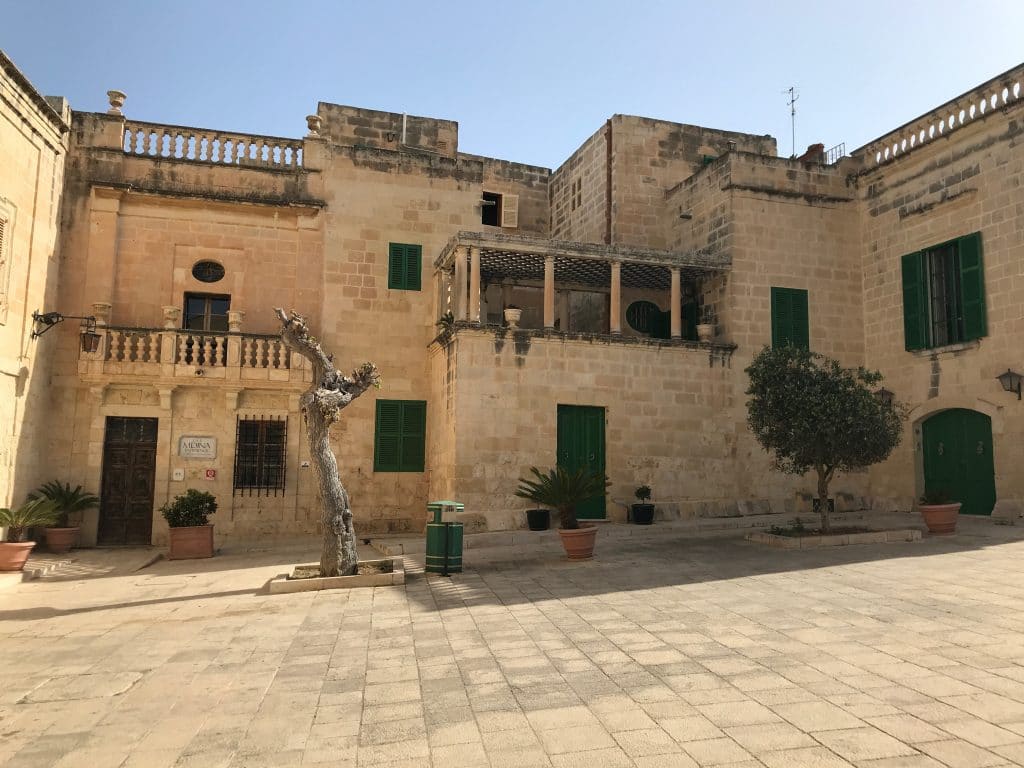
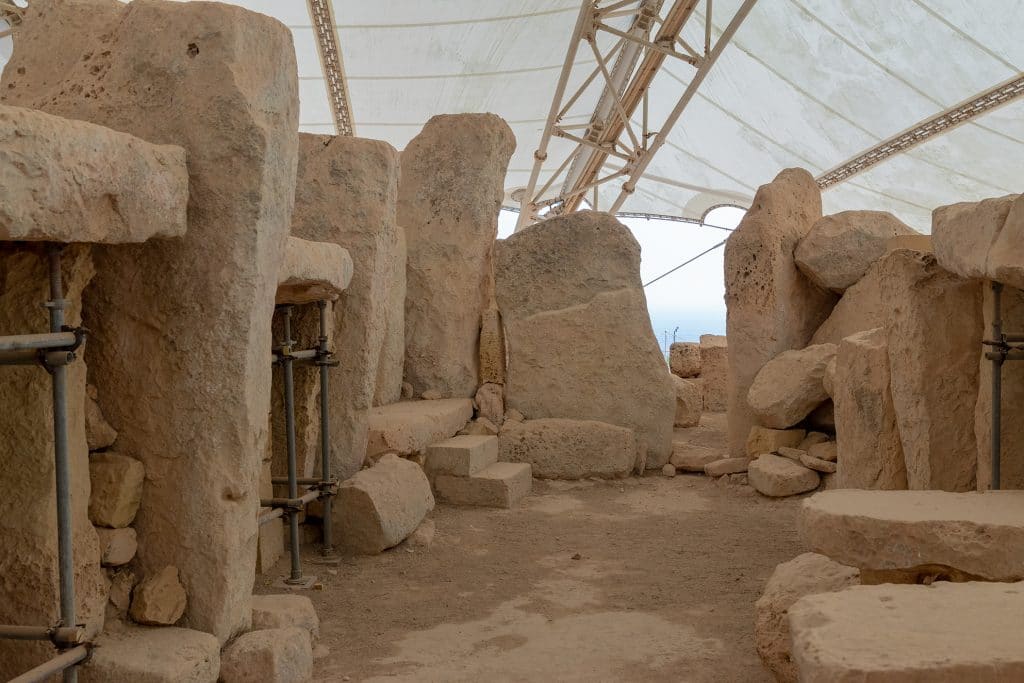

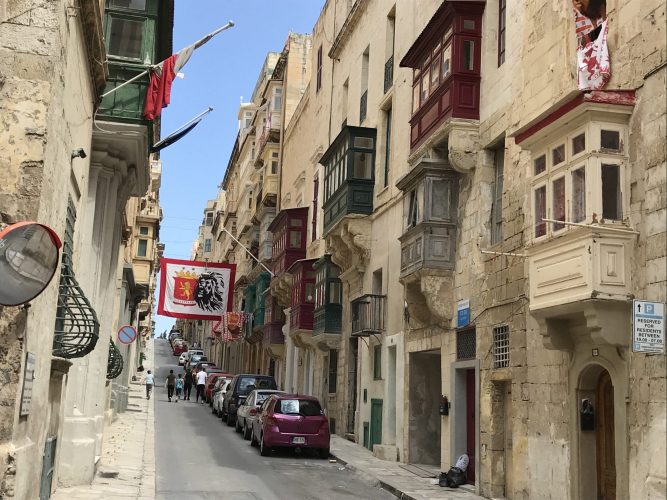
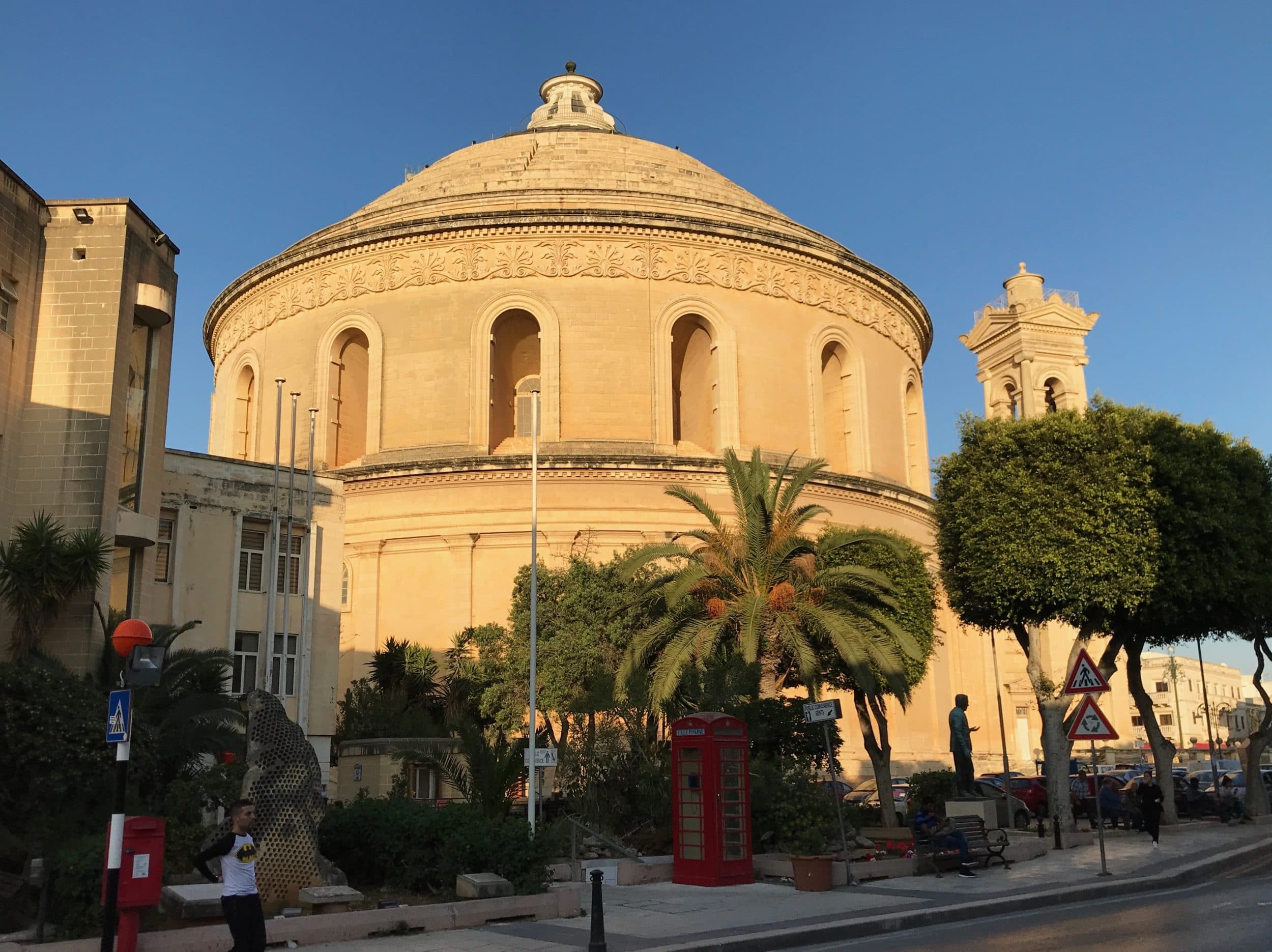

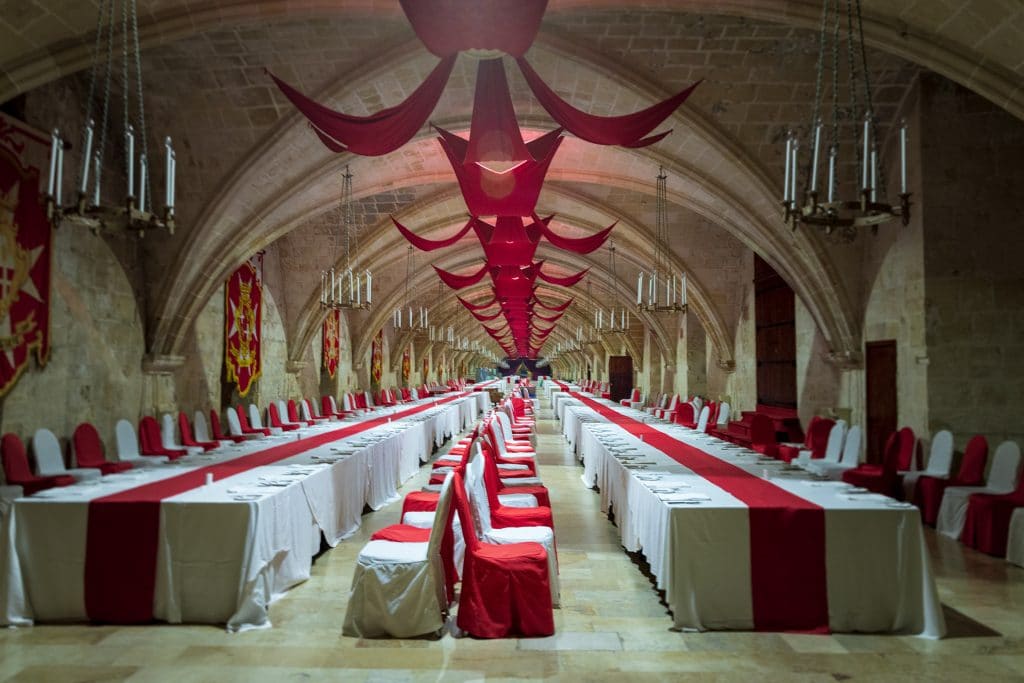

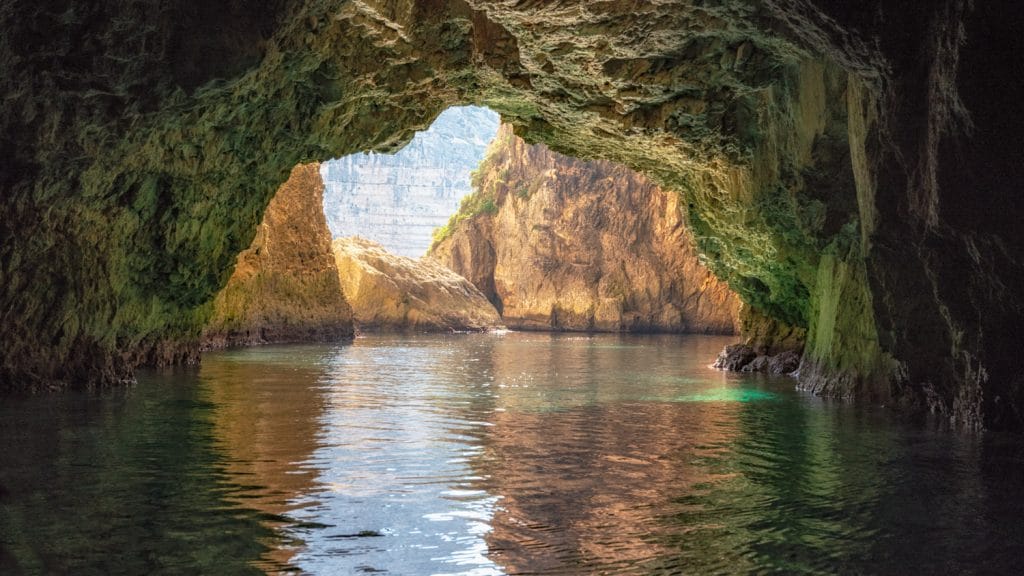
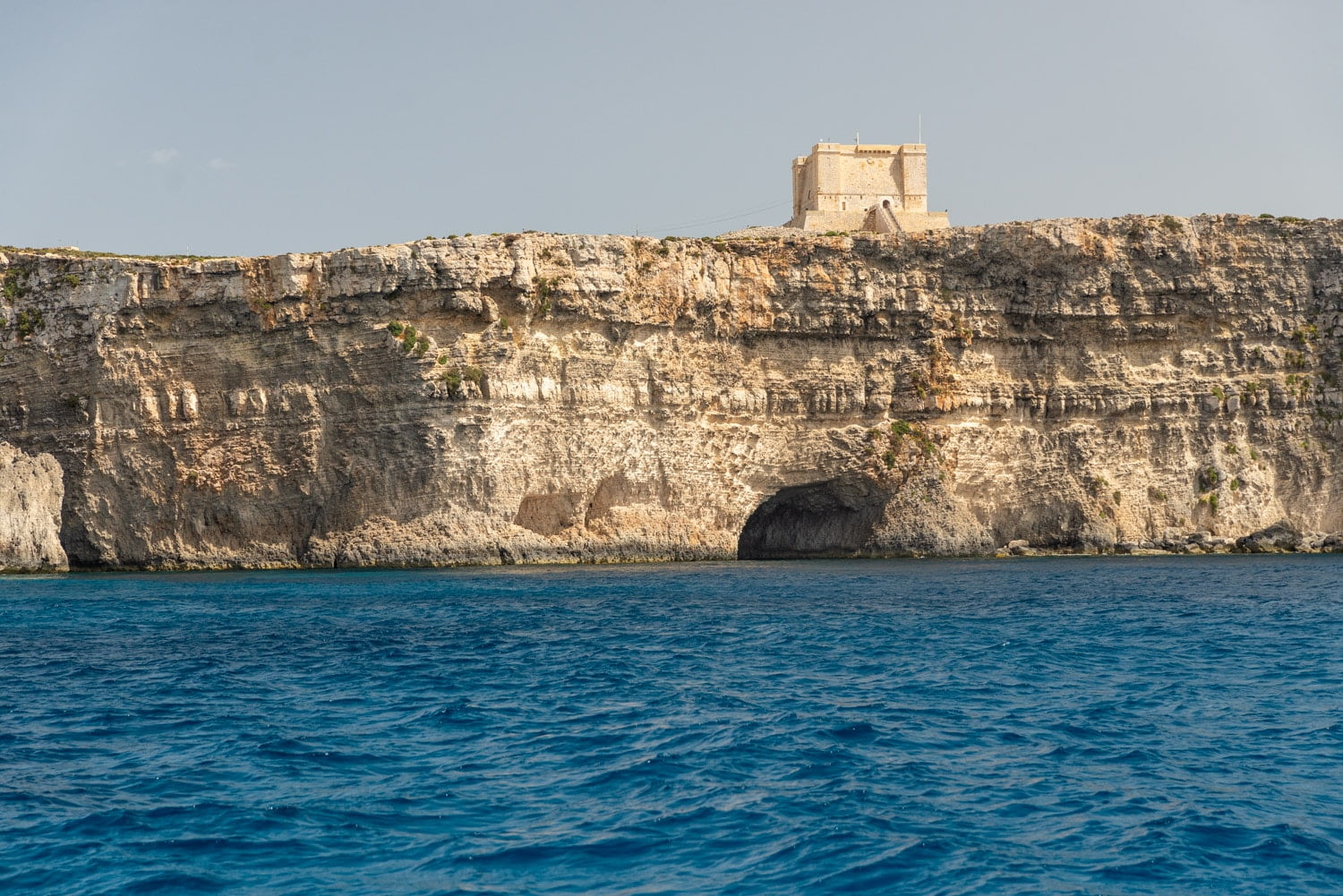
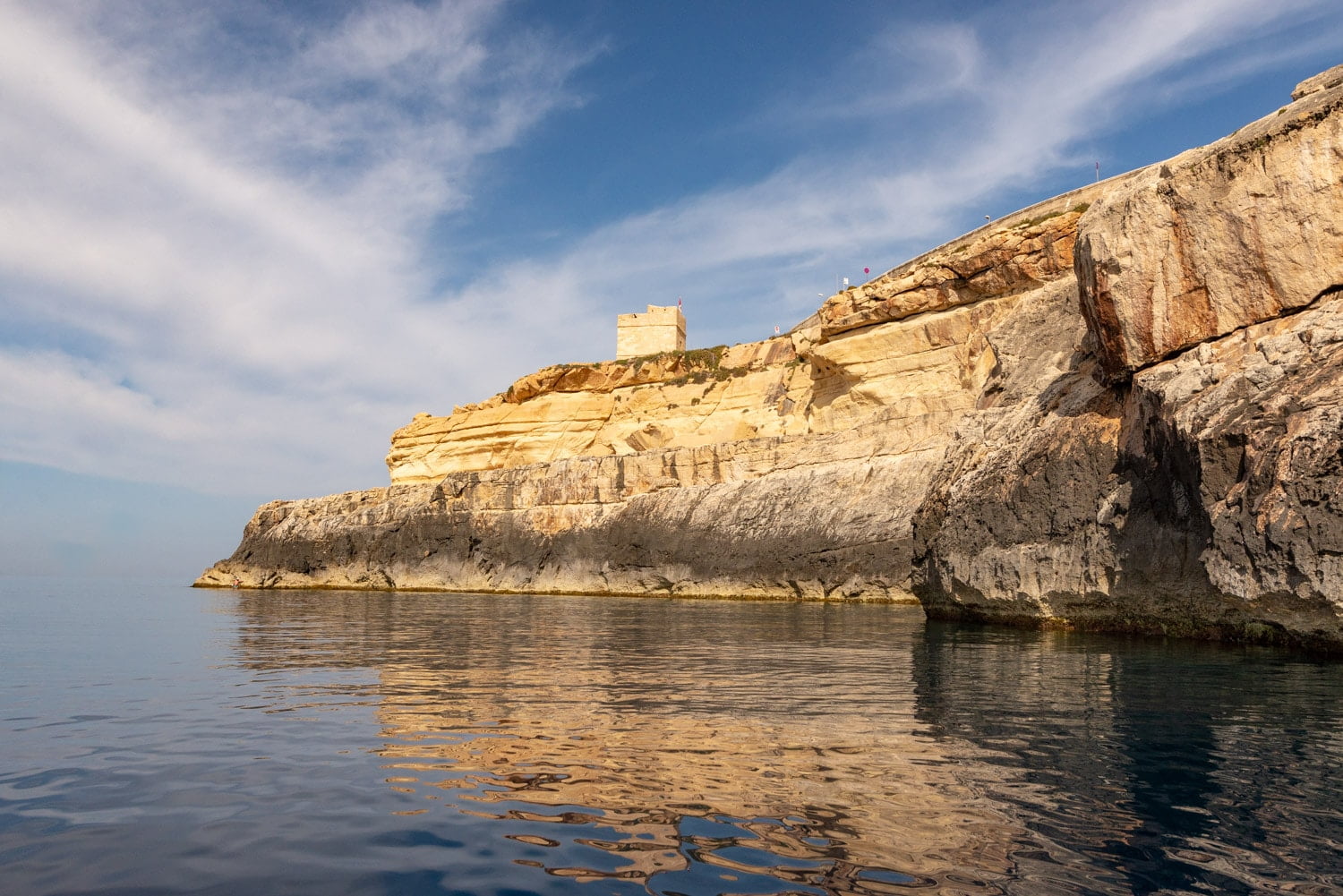
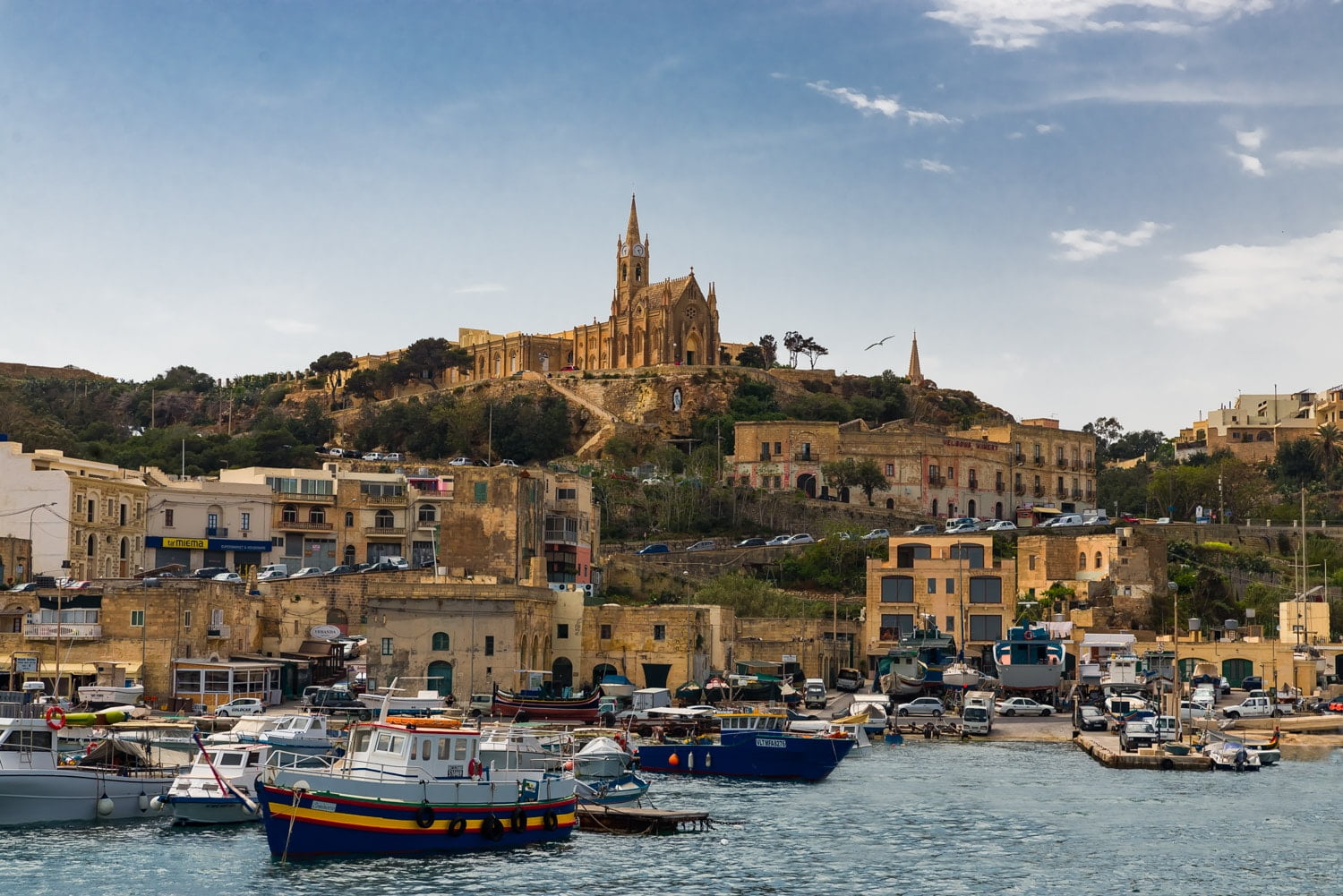
Leave a Reply